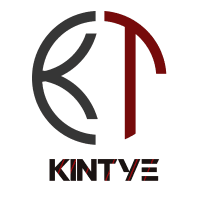
Website maintenance is the silent guardian, ensuring your digital space remains vibrant, secure, and up-to-date. It’s more than just detecting faults; it’s a proactive process that involves regular checks, updates, and responsive tuning. By embracing this digital caretaking, you not only enhance user experience but also fortify your website against security threats, establishing unwavering online reliability.
Why Is Website Maintenance Important
Maintaining your website holds paramount significance as it serves as the digital storefront for your business. In the vast online landscape, where potential customers seek not only information but also a seamless, trustworthy, and professional experience, maintaining your website becomes crucial. Beyond just being a static presence, a well-maintained website ensures that it continues to resonate with your audience, offering them relevant and valuable content.
Essential Aspects of Website Maintenance:
1. Content Updates:
Regularly breathing life into your website through content updates is akin to keeping a conversation fresh. This involves adding new blog posts, updating product/service details, and ensuring time-sensitive content is current. Dynamic and engaging content doesn’t just inform; it elevates your search engine rankings.
2. Security Vigilance:
Security checks form the digital fortress around your website. Regular audits uncover potential vulnerabilities, addressing outdated software, plugins, and other components. Utilising SSL certificates, fortifying passwords, and actively monitoring for suspicious activities are pivotal in maintaining a secure online environment.
3. Backup and Resilience:
Think of website backups as a safety net. Regularly backing up your data is vital for unforeseen issues like server crashes or hacking attempts. A robust backup and recovery plan ensures that, even in the face of adversity, your website can swiftly revert to its previous state.
4. Software Harmony:
A digital orchestra requires harmony. Keeping your website software up to date is not just a nod to security but a dance of performance. Updates encompass your content management system (CMS), plugins, themes, and other software, bringing security patches, bug fixes, and exciting new features.
5. Error-Free Experience:
The user journey should be seamless. Regular scans for broken links, 404 errors, and other glitches maintain a smooth experience. Redirects and fixes ensure that visitors can effortlessly navigate your site, fostering both SEO benefits and user satisfaction.
6. Mobile Responsiveness:
The mobile stage is a central spotlight. Ensuring your website is responsive means adapting to diverse screen sizes. This responsive design guarantees a seamless user experience, whether on smartphones, tablets, or other devices.
7. Load Time Mastery:
The speed at which your website loads is paramount. Optimising load times through image compression, browser caching, script minimisation, and code optimisation significantly improves user experience, reducing bounce rates and boosting search engine rankings.
8. User Experience (UX) Refinement:
The user’s journey is a constant evolution. Regular evaluations involve gathering feedback, analysing behaviour, and making necessary adjustments. It could range from improved navigation to simplified forms, addressing any usability hiccups.
9. SEO Symphony:
Having high visibility for our website in search engines is crucial for success. This entails implementing and maintaining SEO best practices such as updating meta tags, optimising content for keywords, improving site structure, and staying informed about search engine algorithm changes.
10. Monitoring and Analytics Overture:
The performance encore involves monitoring website analytics. Insights into user behaviour, traffic sources, and overall website performance empower informed decisions. Analysing this data identifies trends and tracks marketing success, leading to a continually effective website.
In essence, website maintenance and updates are the ongoing story of caring for your digital home, ensuring it not only survives but thrives in the ever-evolving digital landscape.

Exploring the Depths of Website Maintenance Services list
Maintaining your website is the backbone of a well-functioning online presence. Delving into the intricacies of the web maintenance services checklist ensures your digital space remains secure, error-free, and at peak performance.
1. Vulnerability Scans:
Security takes centre stage in web maintenance. Regular scans are conducted to identify potential vulnerabilities, checking for any lurking spam that may have slipped through filters. This proactive approach aims to safeguard your website from potential attacks and takeovers.
2. Repairs and Fixes:
Addressing errors, bugs, and broken links is paramount. Internal and external links undergo scrutiny to ensure a seamless user experience and maintain optimal search engine rankings. A thorough link check minimises frustration for users navigating your site.
3. Browser Compatibility Testing:
Your website should seamlessly function across various browsers. A comprehensive check ensures compatibility not only with commonly used browsers but also with less mainstream ones, enhancing accessibility for all users.
4. Software Updates:
The lifeblood of your site lies in its critical software. Regular updates cover the content management system, themes, and plugins. Non-critical software is also considered for upgrades if deemed beneficial to overall performance.
5. Website Backups:
A safety net for your data, regular database backups are performed weekly and restored at least every six months. This ensures that in the face of unexpected events, your website can swiftly revert to a stable state.
6. Site Speed Optimisation:
Speed is the essence of user satisfaction. Tools like Yahoo’s YSlow or Google PageSpeed Insights identify and rectify issues that may be slowing down your site, ensuring a swift and seamless user experience.
7. Search Engine Optimisation (SEO):
SEO is the compass guiding your website’s visibility. Regular checks identify issues affecting your site’s ranking, allowing for targeted improvements to maintain or boost search engine performance.
8. Analytics Insights:
Utilising the Google Analytics dashboard, crucial metrics and trends are monitored. This data-driven approach provides insights into user behaviour, helping make informed decisions to enhance the overall performance of your site.
9. Functionality Checks:
Our critical functions undergo rigorous examination to ensure nothing but optimal user experience and complete customer satisfaction.
10. Website Content Review:
Content is king, and regular reviews are essential. Checking for accuracy, updating information, and introducing fresh content with targeted keywords in a vibrant style contribute to user and search engine appeal.
In conclusion, web maintenance services form the bedrock of online success for any business. Beyond the basics, the depth of these services ensures the continuous nurturing and optimisation of your digital presence, removing errors, fortifying security, and providing an exceptional user experience. Maintenance is not just a task; it’s the fundamental strategy for sustained online success.

Kintye’s Website Updates and Maintenance Checklist for Digital Excellence
At Kintye, we understand that maintaining a website is not just a routine—it’s a strategic commitment to ensuring digital excellence. Our comprehensive web maintenance checklist covers weekly, monthly, quarterly, and annual tasks, ensuring your digital presence is always at its best.
Weekly Website Maintenance Checklist
1. Metric Analysis:
Regularly analyse website metrics to understand visitor behaviour, traffic sources, and content performance. Reviewing competitor metrics alongside your own ensures a holistic view of strategic improvements.
2. Create Backups:
Safeguard your hard work by creating regular backups. Whether done manually or with hosting providers, backups are your safety net in case the unexpected occurs.
3. Install Updates:
Keep your site secure and up-to-date by promptly installing core, plugin, and theme updates. Seeking expert help ensures smooth functionality and compatibility.
4. Broken Link Check:
Utilise tools like Screaming Frog to find and fix broken links. Typos or errors in URLs can be easily addressed through redirects or link removal.
Monthly Website Maintenance Checklist
5. Website Performance Analysis:
Use tools like Google Analytics to monitor website traffic, bounce rates, and form submissions. Regular analysis identifies potential issues for immediate attention.
6. Loading Speed Check:
Visitors demand speed. Utilise tools like Google Page Speed Insights to review and enhance page loading speed, ensuring a positive user experience.
7. Content Creation:
Keep your audience engaged by consistently creating and publishing relevant content. Fresh content boosts search engine visibility and attracts a wider audience.
8. SEO Optimisation:
Regularly optimise your site for relevant keywords. Periodically review keyword relevance to stay ahead in search engine rankings.
Quarterly Website Audit Checklist
9. Password Update:
Strengthen security by changing passwords quarterly, incorporating best practices like two-factor authentication to deter unauthorised access.
10. Form Functionality Test:
Ensure the safety of user data by testing and reviewing the functionality of website forms.
11. Social Media Link Check:
Capitalise on the power of social media by verifying the functionality of all social media links. Broken URLs could cost you valuable followers.
12. Complete Site Audit:
Conduct a comprehensive site audit to identify and rectify glitches, ensuring a seamless user experience.
Annual Website Audit Checklist
13. User Testing:
Adapt to changing consumer behaviour by conducting user testing across devices and browsers.
14. Header and Footer Update:
Keep vital information in the header and footer up to date, avoiding disappointments caused by outdated details.
15. Domain Renewal Check:
Prevent the dreaded “Domain expired” message by ensuring timely renewal of domain names and hosting status.
16. Content Audit:
Enhance your content strategy through a yearly audit. Identify high-performing topics, improve conversions, and refine your overall content approach.
Kintye’s website maintenance packages go beyond routine website maintenance tasks—they’re a commitment to digital excellence, ensuring your online presence remains dynamic, secure, and engaging. Partner with our digital marketing agency for a website that evolves with the ever-changing digital landscape.




